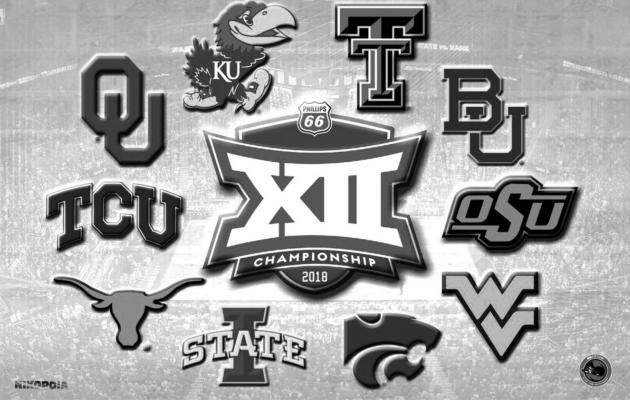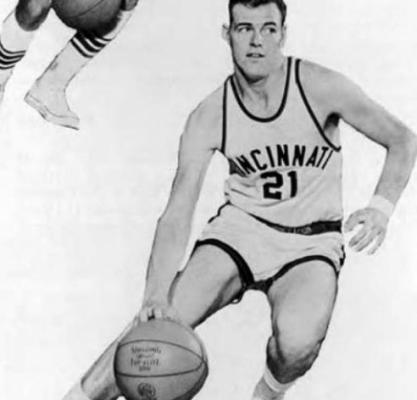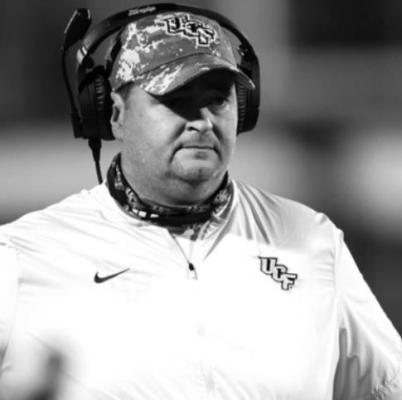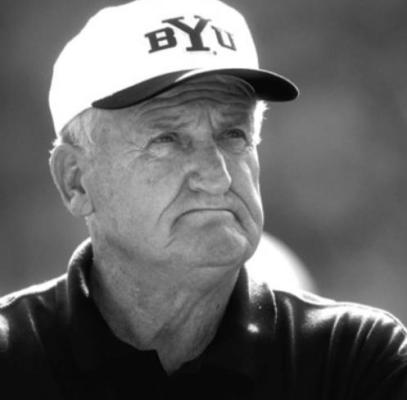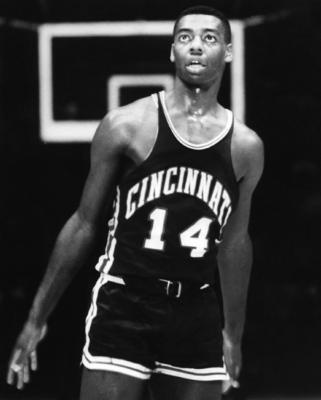Are BYU, UCF, Cincinnati good fit for Big 12?
The news that the Big 12 had invited three new schools to join its ranks caused me to have a reaction that was mixed. Back in the day, the Big 7 and later Big 8 Conference had a very special place in my life. I suffered what I thought at the time was slow death when the Big 8 accepted four outsider schools from the Southwest Conference (Texas Tech, Texas A&M, Baylor and Texas) in its ranks to make what was hailed as a Super Conference or more officially, the Big 12.
It had gotten to the place where I accepted the new reality only to suffer the slow death sensation again when some of the Big 12 members decided to relocate--Nebraska to the Big 10, Missouri and Texas A&M to the SEC and Colorado to the PAC 12. After that reality sunk in, I reluctantly accepted the additions of West Virginia and TCU to give the Big 12 a total of 10 teams. At the time, the irony of the Big 12 having 10 members while the Big 10 had 12 was striking. I liked the way things were going in the new Big 12, but it wasn’t the same as the old Big 8 days. Then once again this summer the slow death sensation overwhelmed me when OU and Texas opted to become a part of the much hated (in my eyes) SEC.
So part of me was satisfied when the Big 12 announced it was inviting Cincinnati, Brigham Young and UCF (Central Florida) to join. But part of me had questions— isn’t Cincinnati basically a basketball school? Likewise, does BYU play anything other than football? And isn’t UCF a minor program that wouldn’t hold a candle to the ones that were leaving--OU and Texas?
I have to admit, the days of the old Big 8 are long gone. One can’t dwell in the past, even though at my age I find myself doing that more and more and more. Give the new conference alignments a chance, a little voice keeps telling me.
Of the new Big 12 members, I am especially excited about Cincinnati. Speaking of dwelling in the past, my thoughts go back to my high school and college years when Cincinnati became a powerhouse in the NCAA basketball world. It all started with Jack Twyman who was an All-American in 1954-55. I wasn’t aware much of Cincinnati’s team, but did read about Twyman in my Sport magazine. He went on to become a star in the NBA as a member of the Rochester Royals and stayed with that team when it moved to his hometown Cincinnati.
But my affinity to Cincinnati came a little later than during Twyman’s tenure. Sport magazine once highlighted some of the top high school prospects in the nation. One was Wilt Chamberlain at Overbrook High School in Philadelphia and another was Oscar Robertson at Crispus Attucks High School in Indianapolis. Both became favorites of mine as they moved from high school to college. Chamberlain went to Kansas and Robertson went to Cincinnati. I heard a discussion awhile back in which one of the talking heads opined that Robertson and Chamberlain might well have been the top two players in NBA history. That was a controversial statement to the others, who wanted to tout Kareem Abdul-Jabbar, LeBron James, Kobe Bryant, Bill Russell and Elgin Baylor. I have my opinion, but I doubt if anyone else is much concerned about what it is.
Anyway, I digress. When Robertson went to Cincinnati, it became a major force in college basketball. At the time, the Bearcats of Cincinnati were members of the Missouri Valley Conference. The way things were set up in the NCAA Tournament back in those years, the only teams that qualified were conference champions. The Big 7 and the Missouri Valley champions went to the Midwest Regional and in Roberson’s tenure, Cincinnati lost out to Kansas of the Big 7 in 1957, and to Kansas State in 1958, but advanced to the NCAA Final Four in 1959 and 1960. It was the start of five consecutive Final Fours for the Bearcats, which is the longest string of any school except UCLA. Robertson’s team finished third both years.
But then came some magic. Ohio State had won the national championship in 1960 and had a super, super team featuring Jerry Lucas, John Havlicek and a few others who advanced to the NBA to become stars. Lucas and company were basically sophomores so it was predicted that the Buckeyes would win the next two titles as well. Things went as planned in 1961 until the championship game when Ohio State ran into Cincinnati. The Bearcats were made up of a group of unknowns, but they won 22 straight after starting with a 5-3 record. They were heavy underdogs against Lucas and Havlicek, but won 70-65 in overtime.
The next year the Bearcats went 28-2, but just barely won the Missouri Valley. Bradley out of Peoria, Ill., had a great team and Cincinnati had a close call in winning a conference playoff game to qualify for the NCAA. They had another tough game with Kansas State in the Midwest Regional, but won it and advanced to the Final Four for the third straight year. In that event, they squeaked past UCLA to set up a rematch with Ohio State in the championship game and won it 71-59.
The next year Cincinnati again made it to the Final Four and almost won a third-straight championship. They overwhelmed Oregon State 80-46 and faced Loyola of Chicago in the championship. The Bearcats led by 15 points in the second half, but Loyola put together a big rally and eventually won by two points in overtime.
One of the highlights of my college years was when Cincinnati came to Ahearn Fieldhouse in Manhattan to play Kansas State. In those years a Sunflower Classic was played. One night there would be two games in Lawrence featuring K-State vs. an outside team and Kansas vs. another outside team. The next night they would swap locations and opponents with two games in Manhattan. In December, 1962, Marquette and Cincinnati were the invited guests. Cincinnati played K-State in Manhattan and won by a relatively comfortable margin. As I remember it the Bearcats were ranked No. 1 or No. 2 at the time and were expected to go to the NCAA Final Four once again, which it did. I can remember their lineup quite well. Ron Bonhom was the top scorer. At the time I thought he was the smoothest player I had ever seen. Just 6-foot-5, he could maneuver his way around the basketball court extremely well. Cincinnati also had Tom Thacker and Tony Yates, two pretty good guards and big, burly George Wilson at the post. I am having trouble remembering the fifth starter, but those four are vivid in my memories. K-State wasn’t a bad team, with players like Willie Murrell in the lineup, but Cincinnati made it look weak that night. I still can’t understand how Loyola beat the Bearcats that year.
Cincinnati never quite reached that level of achievement again, qualifying for the Final Four only one more time--in 1992. But it has always been a force to be reckoned with on the basketball court. The coach in 1992 is now at West Virginia--Bob Huggins.
I have never been much of a fan of Brigham Young University. Back in the years when LaVell Edwards was the football coach, BYU always had a great football team. I remember one year when BYU went undefeated. There was a lot of controversy when the Cougars went unbeaten and were proclaimed the national champions in 1984. The level of competition for BYU was not equal to other teams in contention for the national title, but the thought that BYU earned that status because it was the only unbeaten team prevailed among poll voters. Edwards loved the passing game, and watching BYU play (on television) was always a treat for me. One could expect a lot of scoring. One of the top players for BYU during the Edwards years was Steve Young, who I just learned is a great-great-great-grandson of Brigham Young, the namesake of the University.
I know very little about UCF, except in recent years it has had some very good football teams. I just learned that the school, based in Orlando, Fla., first fielded a football team in 1979 as a Division III team, and in 1996 made the move to Division I. The Knights went undefeated in 2017 and claimed the national championship despite not being invited to the playoffs because some obscure publication named it national champion. The coach of that team, Scott Frost, took a job at Nebraska after that season and former Oklahoma Sooner quarterback Josh Heupel was named coach to replace Frost. Heupel then was named coach at Tennessee at the beginning of this year.
Cincinnati, BYU and UCF in the Big 12? I guess I’ll learn to like it. But the jury is still out.

